The Art of Ana Maria Plant
Part 2 – ‘Brasil Colonial’
Slavery in Brazil was started around 1530 by the Portuguese bringing people from Africa in order to work mainly on sugar plantations. This work had been done until then by the native Indians (Os Donos da Terra) who had always inhabited the place. During the 16th and 17th centuries the slave labour was transferred from the indigenous populations to the Africans. Slavery was finally abolished by the Lei Aurea signed by Princess Isabela on the 13 th May, 1888. During this period more than 4,000,000 people were brought over as slaves.
The various nationalities which came to Brazil over the centuries for different reasons contributed to the country and its culture in their own ways. The typical architecture throughout the country was strongly influenced by the Portuguese, with their colourful ceramic tiles and wrought-iron gates and fencings. The character and lifestyle of the nation owe much to the mixture of the three groups, Indians, Europeans and Africans, with their rich musical culture, their religious rituals, their art and their gastronomy. The Europeans, the Japonese and the middle-eastern races also played an important part in creating the national character due to their large numbers of immigrants. The gradual mixing of these races naturally served to create a strong and resilient composite race to inhabit their magnificent land,
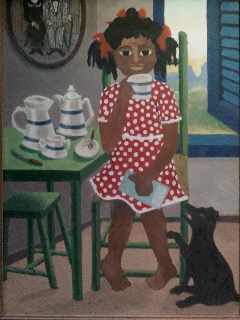
- Mixed media.
- ‘Polkadot Girl’
- 60x40 cm
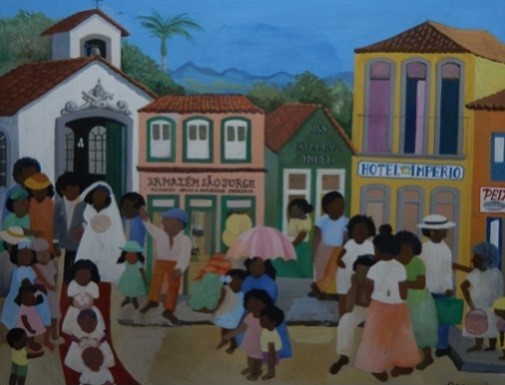
- Oil on Canvas.
- ‘The Big Wedding’
- 73x92 cm
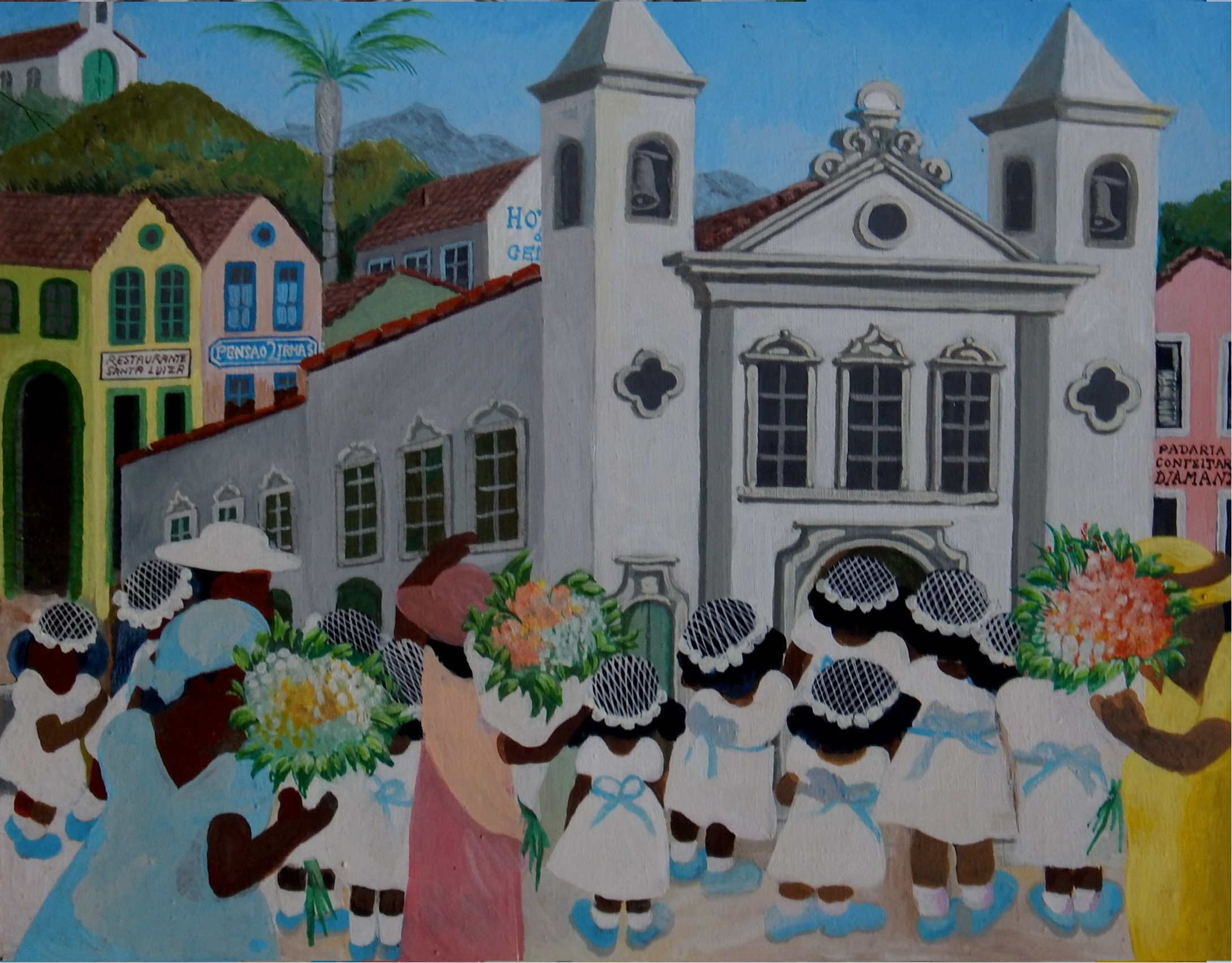
- Oil on Canvas.
- ‘The First Communion’.
- 73x92 cm
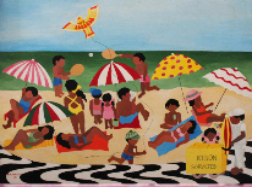
- Oil on. Canvas
- ‘Copacabana Beach’.
- 50x40 cm
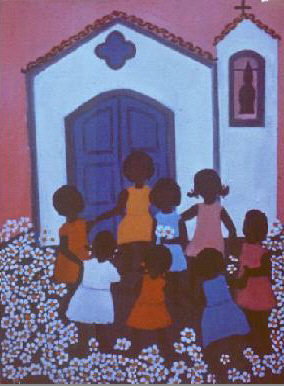
- Oil on Canvas
- ‘Ring-a-ring-a-roses’
- 30x40 cm
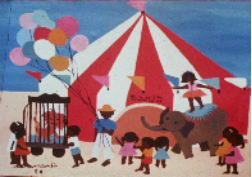
- Oil on Canvas.
- ‘The Circus’
- 50x40 cm
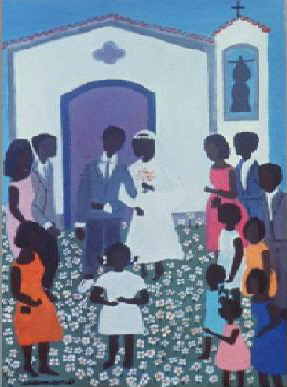
- Oil.on Canvas
- ‘Getting Married’
- 30x40 cm
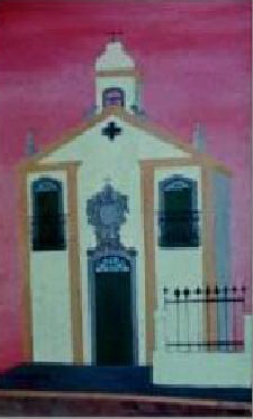
- Oil on canvas
- ‘Igreja S Jose’.
- 34x40 cm
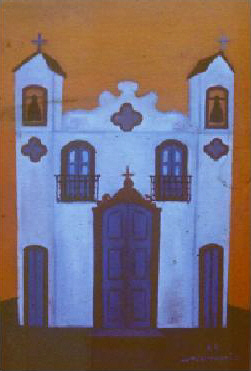
- Oil on Canvas
- ‘Igreja Matriz’.
- 34x40 cm

- Acrylic on Canvas
- ‘Casa da morenhinha, Paqueta’
- 81x50 cm
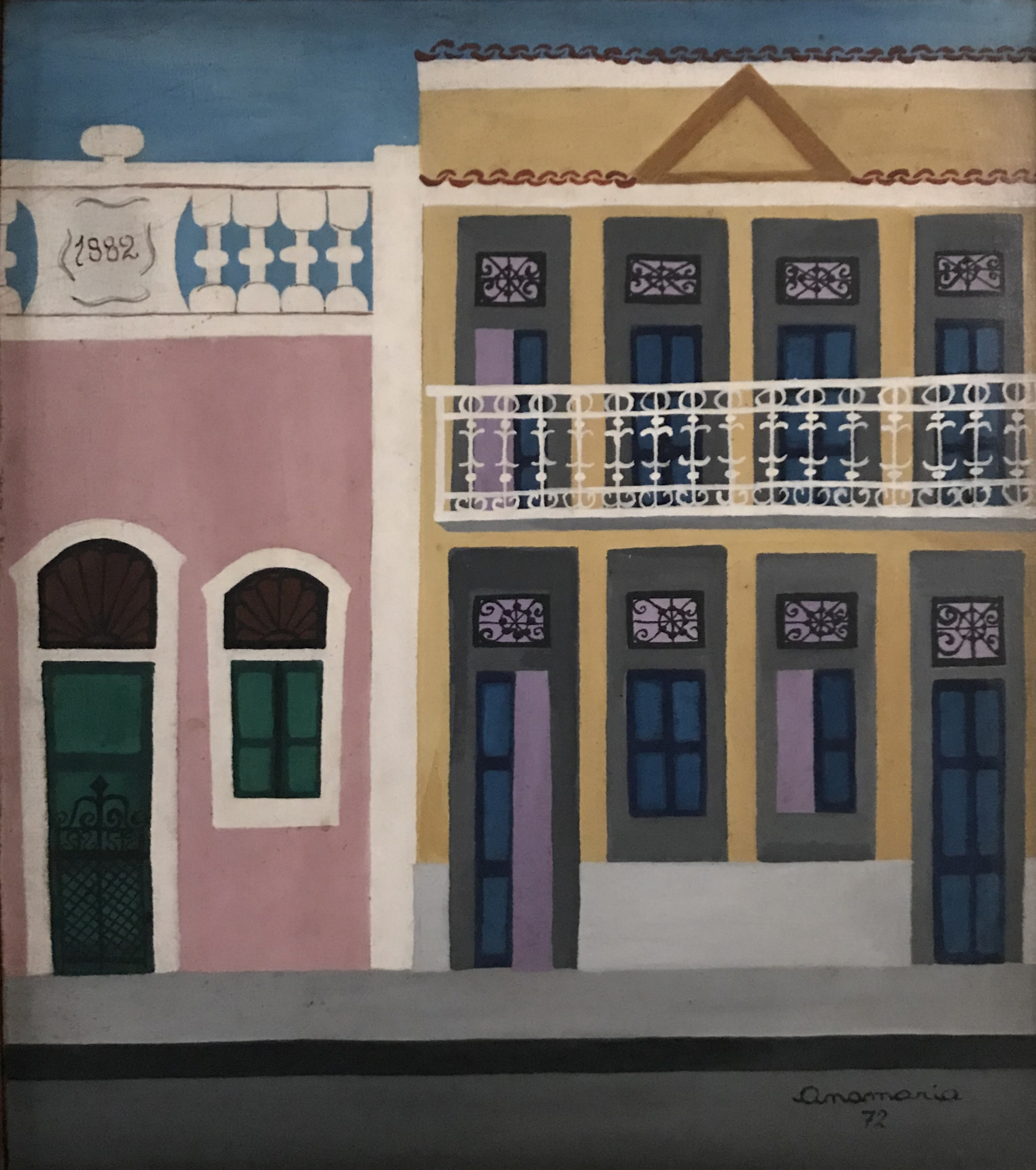
- Oil on Canvas
- ‘Rua do Lavradio’.
- 70x75 cm
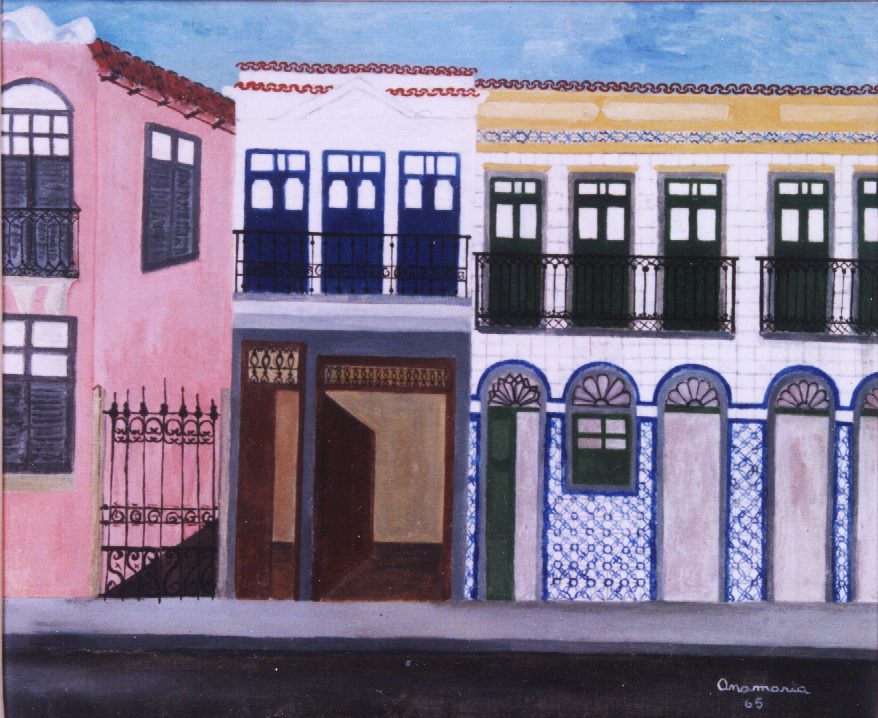
- Oil on Canvas
- ‘Rua do Catete’
- 60x70 cm
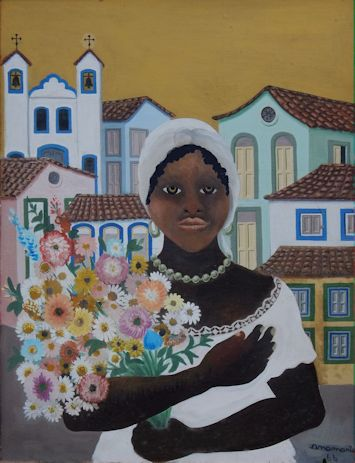
- Oil on Canvas
- ‘Flowers for Clementina’
- 81x100 cm

- Oil on Canvas
- ‘Flower for Paulina’
- 81x100 cm
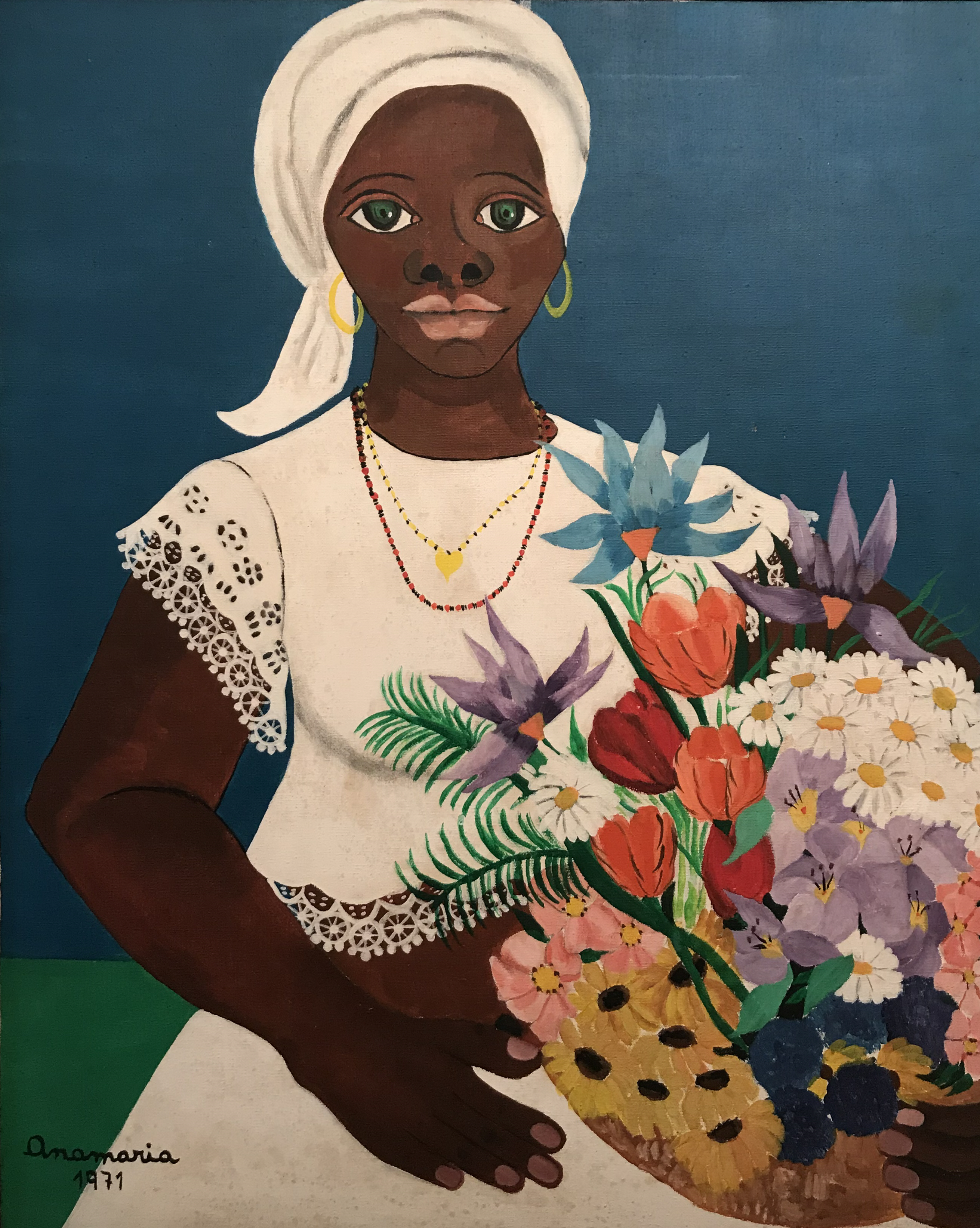
- Oil on Canvas
- ‘Flowers for Josefina’
- 81x100 cm
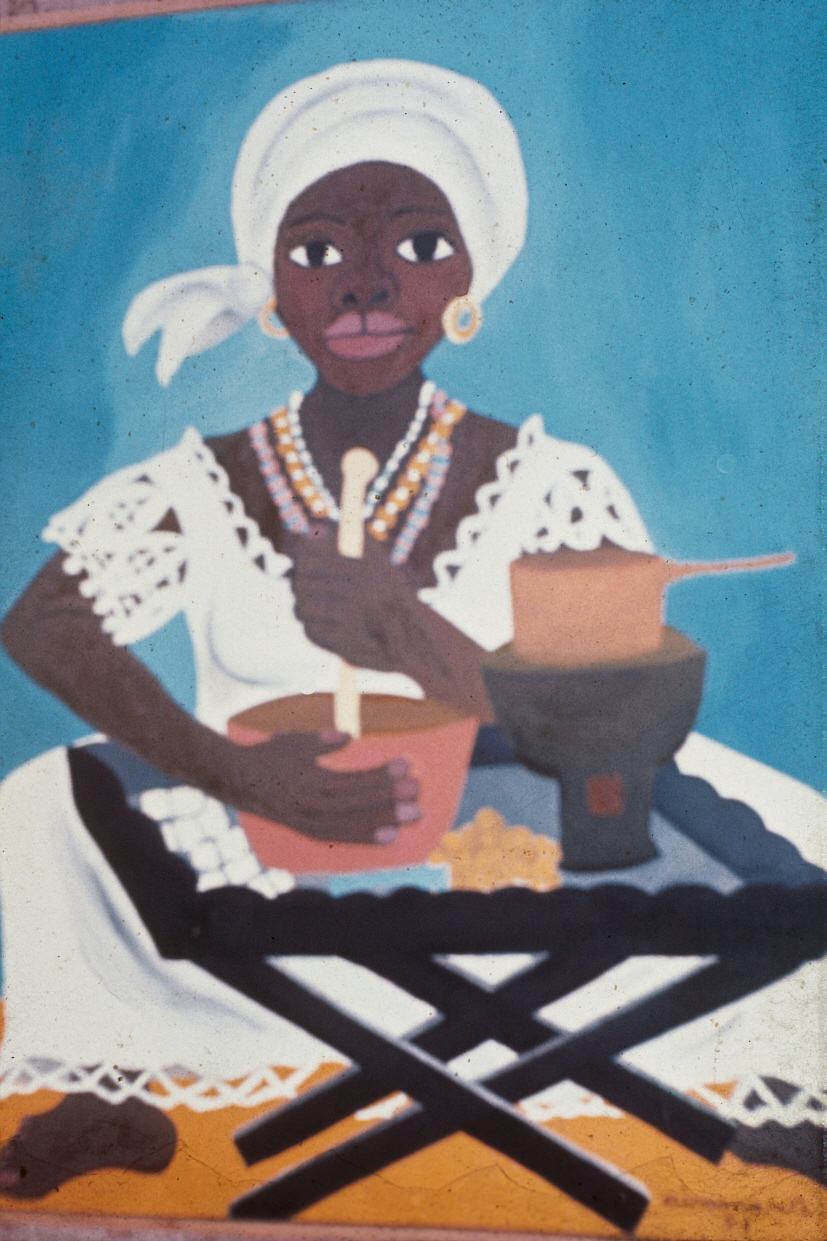
- Oil on Canvas
- ‘Tabuleiro da Baiana’
- 81x100 cm
‘Ana Maria, whose exhibition opens to the public today, is still very young and certainly has a long way to go. Tending towards primitivism in her art, she celebrates her adolescent world in terms of form and colour, transforming things and beings with an ingenuous vision. Ana Maria seems to prefer urban landscapes, open-air scenes and large, brightly-coloured exteriors. She has a rudimentary drawing technique based on colour and structuring, which is the most positive aspect of her work. Those who admire this genre must also love these lyrical paintings, the first and not entirely ripe fruit of this young artist, who deserves attention, encouragement and support.’
Jose Roberto Teixeira Leite (Rio de Janeiro 1964)
Webmaster: SBR Designer